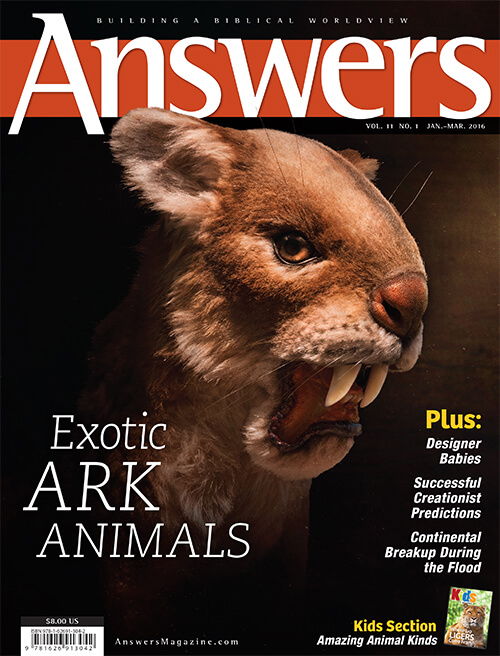Why Not a Square Tree?
Experiment
Some realities of nature are so common that we don’t even stop to ask why. Like round trees.
Why don’t we find square tree trunks or triangular shapes in nature? Many obvious details, such as round trunks, are often overlooked. If we’d just pause a moment to consider the scientific reason for their existence, we might discover new reasons to praise our Creator.
Trees are round primarily because the wood layers grow outward from the center in all directions. Growing in the shape of a cylinder has a big benefit. It seems to be optimum for tree strength against stress on the top of the tree from wind and heavy branches.
A rounded tree bends more easily than a flat-sided tree. A cylinder bends equally in all directions, depending on the wind. In contrast, a square tree trunk would be vulnerable at its corners. The corners would not bend but simply break in heavy winds. Telephone poles and light posts are round for a reason (see experiment)!
Room for Improvement?
The rounded tree shape has other benefits, too. For instance, it minimizes the outside surface exposure to injury or infestation. Round trees have one disadvantage, however—not for the trees but for modern loggers. The problem is waste.
When circular trees are harvested and cut into boards, the outer, rounded portion—nearly half of the log—ends up as scrap, whether discarded, burned, or ground into pulp for paper production. A lot of good wood is lost in the process. It has been suggested that if trees were square instead of round, there would be much less waste.
This isn’t a problem with the original tree design, however. Throughout history, logs have been a primary source of fuel, and fuel is not a waste. Only when modern industry developed other energy sources did it become “waste” to burn wood byproducts. Advanced industrial nations try to maximize their profits when harvesting trees.
Still, is there any hope of solving the waste problem? In the 1980s a botanist in Canada’s heavily forested province of British Columbia thought he might have found a way to get trees to grow square trunks. Cutting away the bark at four “corners” (every 90°) he was able to get the wood to grow extra at these corners. Carrying the idea even further, he suggested workers might be able to cut open such trees and remove flat boards from the inside. If loggers left intact the trees’ outer growth layer (called the cambium), the trees would grow new wood.
The researcher was granted a patent for his square-tree technique; however, the novel idea failed to generate commercial interest. He only succeeded in making square trees less than a centimeter across before dropping the research.
Square trees do grow in places other than research labs and storybooks. Panama is home to a grove of more-or-less square trees in the cottonwood family (Quararibea asterolepis) that has become a tourist attraction. Even the inside tree rings show the square growth pattern. But it’s just an oddity that puzzles scientists. To figure out whether the square design is caused by the environment or genetics, botanists planted some of the seedlings in Florida, where they grew normally. So it appears that the rich volcanic soil at this location in Panama may be a factor.
Trees are arguably the largest and the oldest living things on earth. One giant redwood in the western United States has grown to a height of 379 feet (115.5 m), equal to a 30-story building. Meanwhile, bristlecone pine trees live for several thousand years. Trees stand tall with outstretched arms, through storms and drought, wind and hail, summer and winter. Their round trunks clearly hold them up quite well.
Answers Magazine
January–March 2016
Discover the role of ancient Near Eastern writings in understanding Scripture and learn about some exotic animals that can only be explained by a Creator.
Browse Issue SubscribeRecommended Resources

Answers in Genesis is an apologetics ministry, dedicated to helping Christians defend their faith and proclaim the good news of Jesus Christ.
- Customer Service 800.778.3390
- © 2024 Answers in Genesis





